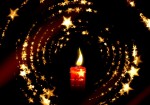Pouring drinks is one of the basics of bartending, and one of the first things one needs to know about this is how to measure his or her liquids. Precision is important when making cocktails, since recipes may rely on very specific combinations of ingredients. Also, if you want to replicate a drink in the future, you will need to know how to reproduce a certain flavor profile. All of this is much easier to do if you are careful with your measuring.
Below is a “how to” video about how to measure and pour drinks. It illustrates the basics of measuring using three methods: the jigger, the four-count, and the finger technique. Each has its own advantage.
What are the advantages of each method? Using a jigger is the most precise. The jigger serves as a measuring tool which allows you to get the same exact quantity of liquids into a drink every time. With that said, I should note that in the video the bartender does something which I think is a bit sloppy: she doesn’t fill her jigger all the way to the top before she pours it into the glass. If you watch carefully, you’ll notice that she stops a small distance before the rim. While this may not seem like much, it’s not the best practice since it makes it harder to replicate a drink. If you use a jigger, fill it as close as possible to the top before you pour. The downside of this method is that it’s easier to spill liquids, and so if you have shaky hands you may want to use one of the other methods.
The advantage of the four-count method is that it is much quicker than using a jigger. However, it is not as precise. Notice again in the video, the bartender’s speed pouring resulted in a less-than-full ounce after she measured it in the jigger. Also, this method more than likely requires that you have a pour spout handy.
Lastly, the finger technique is good for occasions when you want a visual cue to help you measure liquids. The disadvantage is that this cannot be done very easily if pouring into a metal shaker, and it really requires you to be familiar with your glasses and the specific type of ice that is stocked in your home or bar. An ounce of liquor might fill up a glass to a greater or lesser height depending on the type of ice you use.
With all of these methods, practice will help. Rather than wasting expensive liquor on practice pours, you may want to fill up some old alcohol bottles with water that you dye differently using food coloring.
Tags: bar lessons, jigger, measuring



